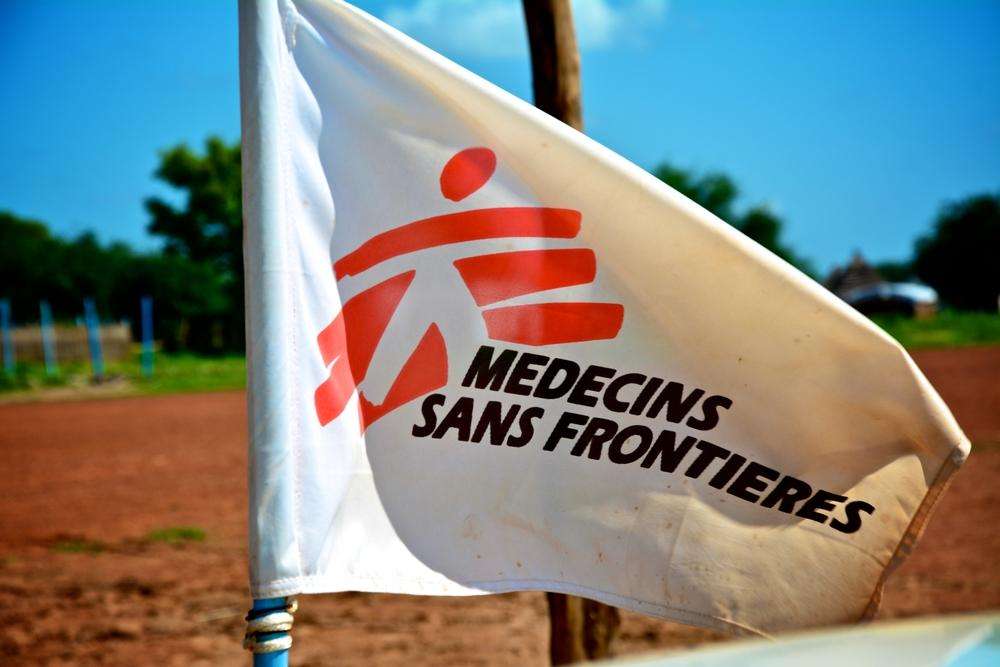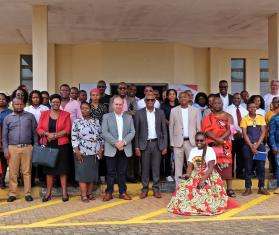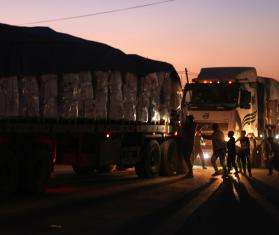by Susan Shepherd
The U.S. government must supply malnourished children overseas with the same quality of nutritious foods as it currently provides for low-income American families, says Dr. Susan Shepherd.
Susan Shepherd of Butte, Mont., is a pediatrician. She has worked for Médecins Sans Frontières/Doctors without Borders (MSF) for the last four years and coordinates work in nutrition. She has worked in Uganda, Chad, Niger and Ghana. The following was originally published June 27 in the Kansas City Star. It can be read online here.
Finding the right recipe of diet and exercise to keep children healthy is never easy for a nation. Within a generation, we have gone from “Hunger in America,” the landmark 1968 report on the millions of American children suffering from severe malnutrition, to “Let’s Move,” the new initiative to improve nutrition and reduce childhood obesity.
One consistent bright spot, however, has been the Women, Infants and Children’s program (WIC) that emerged in the early 1970s. Through WIC, low-income families are given the means to improve children’s and pregnant or breastfeeding mothers’ diets. In the first two years of life, children are growing and learning at breakneck speed—and there’s a crucial 18-month window to make a lifelong difference. From 6 months onward, children need a range of nutritious foods that provide the right mix of proteins, fats, vitamins and minerals essential to health, growth and development. WIC assures access to these costly, healthy foods: milk, eggs, baby foods, fortified cereals, fresh fruits and vegetables.
This program has helped wipe out childhood malnutrition in America.
It’s time the U.S. government applied the same nutrition standards to the foods it sends overseas to children in need. In Kansas City this week, U.S. and international policymakers, health care professionals, aid practitioners and advocates will discuss ways to improve the quality of the foods provided to the developing world.
Every year the U.S. sends more than 100,000 tons of fortified corn-soy bean flour to nutrition programs, primarily in sub-Saharan Africa. These flours, grown on American farms and processed in American factories, are used as porridge to feed malnourished children. Tragically, they do not meet the nutritional requirements of these children.
Fortified corn-soy porridge is seen as emergency food aid, as if it’s intended just to tide children over for a short time until things improve. But a recent Government Accountability Office report reveals that more than half of this food actually goes to some countries year after year like an international WIC program. A young child in Ethiopia has the same nutritional needs as a child in Kansas City, and they need more than corn and soy beans, they need animal-sourced foods like milk.
Unfortunately, new recommendations in a USAID-commissioned Food Aid Quality Review still fall short of what young children need. WIC provides at least a third of an infant’s daily calories as milk, eggs or meats; the Quality Review adds a meager offering of 2 percent of energy from milk to the food it intends for malnourished children living in the most food-insecure regions of the world. The other 98 percent is corn, soy and vegetable oil.
Last year in Niger, an impoverished sub-Saharan nation, Doctors Without Borders distributed a milk-based paste fortified with vitamins, minerals and other essential nutrients to 150,000 young children between 6 months and 2 years, as part of a program providing medical care for common childhood illnesses, including malaria.
We monitored closely, and observed that deaths among those children receiving the milk-based supplement were reduced by half compared with those who did not receive it.
The USAID quality review recommends the inclusion of these “baby foods,” but because they cost more, humanitarian aid agencies will likely continue to rely on the less appropriate corn-soy flours.
Investments in child health and nutrition programs should be based on what children need, no matter where they live.




